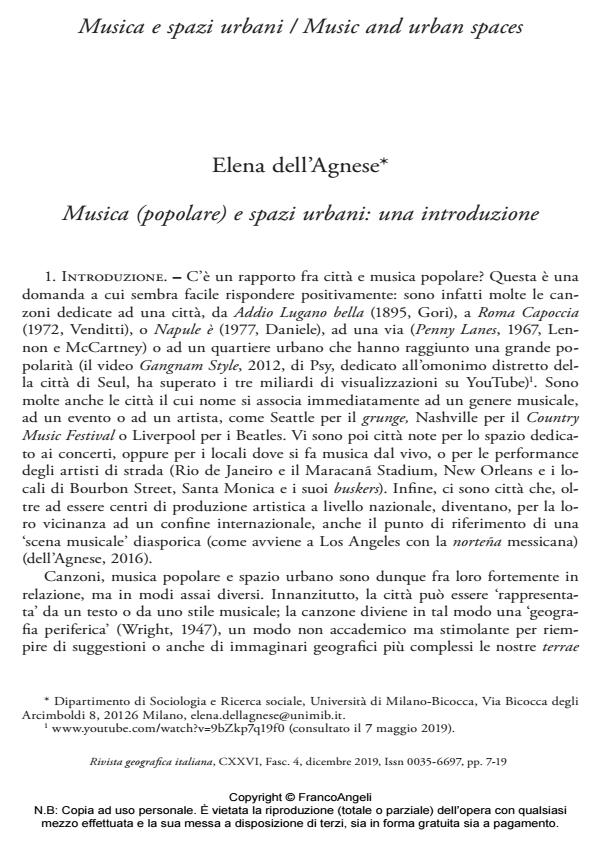Musica (popolare) e spazi urbani: una introduzione
Titolo Rivista RIVISTA GEOGRAFICA ITALIANA
Autori/Curatori Elena dell’Agnese
Anno di pubblicazione 2019 Fascicolo 2019/4
Lingua Italiano Numero pagine 13 P. 7-19 Dimensione file 124 KB
DOI 10.3280/RGI2019-004001
Il DOI è il codice a barre della proprietà intellettuale: per saperne di più
clicca qui
Qui sotto puoi vedere in anteprima la prima pagina di questo articolo.
Se questo articolo ti interessa, lo puoi acquistare (e scaricare in formato pdf) seguendo le facili indicazioni per acquistare il download credit. Acquista Download Credits per scaricare questo Articolo in formato PDF

FrancoAngeli è membro della Publishers International Linking Association, Inc (PILA)associazione indipendente e non profit per facilitare (attraverso i servizi tecnologici implementati da CrossRef.org) l’accesso degli studiosi ai contenuti digitali nelle pubblicazioni professionali e scientifiche
- New Geographies of Music 2 Séverin Guillard, Ola Johansson, Joseph Palis, pp.1 (ISBN:978-981-97-2071-2)
Elena dell’Agnese, Musica (popolare) e spazi urbani: una introduzione in "RIVISTA GEOGRAFICA ITALIANA" 4/2019, pp 7-19, DOI: 10.3280/RGI2019-004001